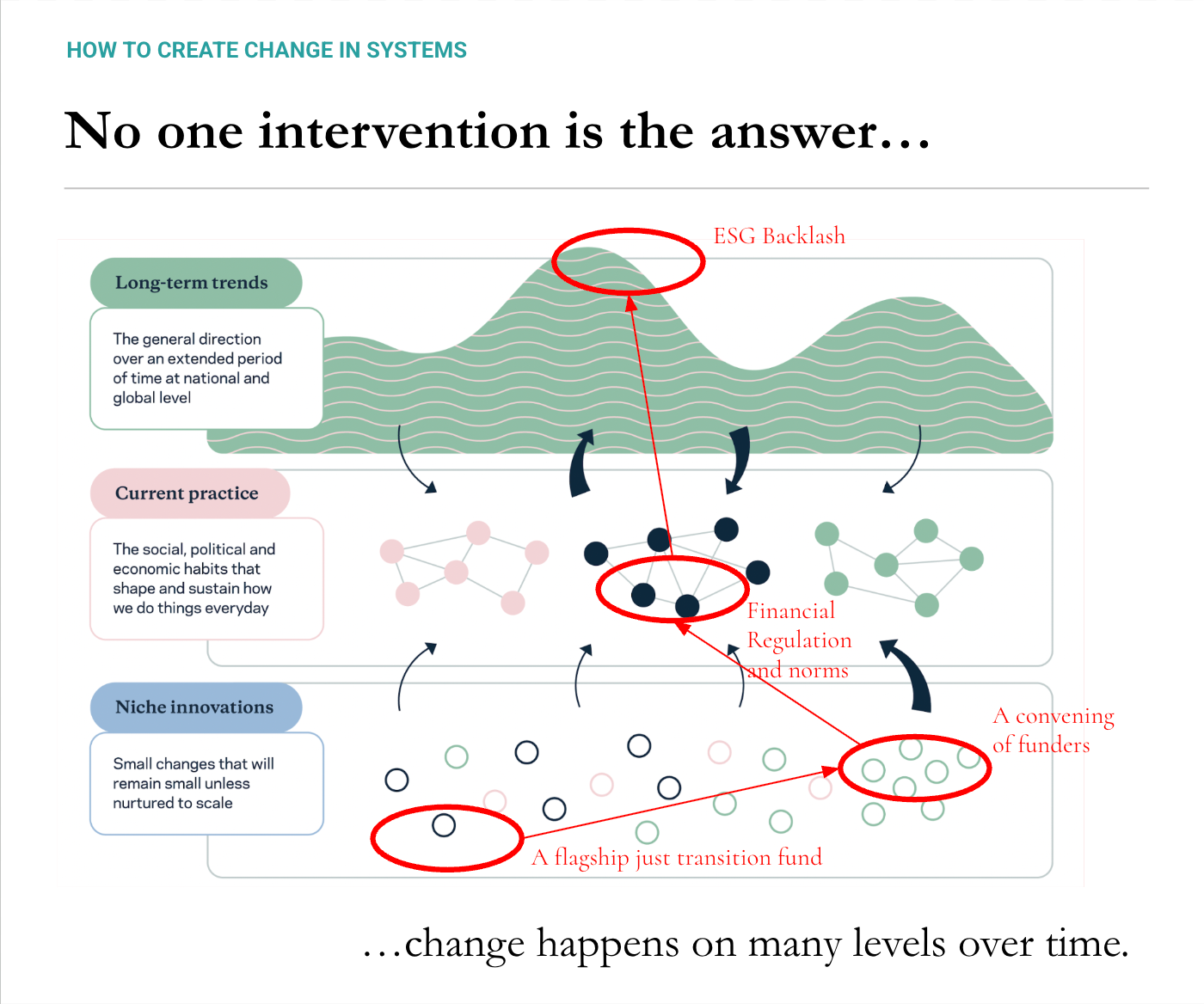
Financing a Fair Transition: Inside 103’s Work with the Just Transition Finance Lab
by Kate Wolfenden
The context: just transition finance - where are we?
There’s no doubt about it, transitioning to a sustainable economy is a sizable investment. While there is no single source of truth, a suite of globally credible sources converge on the undeniable message that we are facing multiple trillions of annual needs to deliver on our net-zero pathway.
And our progress in plugging that gap? Using Climate Policy Institute (CPI) as an example, we are gathering speed, but we are approximately 80% below where we need to be. (Estimated at $8-9T/yr through 2030 rising to over $10T/yr in 2050, CPI) with observed climate finance flows of $1.9 trillion in 2023 and early data indications of over $2 trillion in 2024 (CPI).
What then for progress on just transition finance? Quantifying this gap becomes even more challenging when we consider the “just” dimension of the transition. Just transition finance ensures climate action supports workers, communities, and vulnerable groups. While it aligns net-zero goals with social outcomes such as decent work, regional equity, and poverty reduction, it weaves two critical important finance themes together; but in the process, risks losing itself.
What makes assessing progress on just transition finance enduringly difficult is a perfect storm of a lack of political mandate and resultant scrutiny, lack of practitioner understanding, alignment and integration (across both public and private sectors), and insufficient influence from affected stakeholder to break through into commonly understood and accepted practice; such enabling conditions could trigger the critical mass of underpinning infrastructure needed to enable this investment theme to flourish. Instead, what we are experiencing is deep fragmentation; of concepts and definitions, of principles and practices, and of metrics and mandates.
The result? Growing stagnation, in the face of mounting headwinds and retrenchment. For a concept with the potential to transform our collective efforts toward a socially and environmentally balanced transition, current financial flows remain critically below what this critical decade requires.
The case for the financial sector to support the just transition is well-established at a concept level, across investors, banks, and multilateral development banks. The challenge is no longer why, but, how.
At 103, we like to think to zoom in and zoom out on these moments. Go deep into the detail of what exactly the people the key stakeholders are thinking, feeling and doing, and look at it from a macro and longer term view. This is our view on just transition finance today, and how we are considering making a small but meaningful contribution to its trajectory.
This is how we arrived in the just transition finance space last year, thanks to the support of Laudes Foundation and the partnership with the London School of Economics’ Just Transition Finance Lab. Our focus? To consider where and how deliberate convenings can support the maturation and acceleration of the just transition finance movement.
The Multi-Level Perspective (MLP) framework is an excellent framework to think about large scale societal transitions over time change, but it also is complex. To help others engage with it, we simplified it, so anyone mainstream public or private sector actor can use it. We call it the MLT: Multi-Level Thinking.
An MLP looks at transitions across 3 levels: Long term trends, current practice and niche innovations. Looking at change this way helps key stakeholders easily see and make sense of the the potential combinations of actions that either (i) keep a system stuck in its current state, or (ii) a help break it free and form new transformational pathways over time. As such It is a key framework we are using to bring alignment between the key stakeholders in this work.


